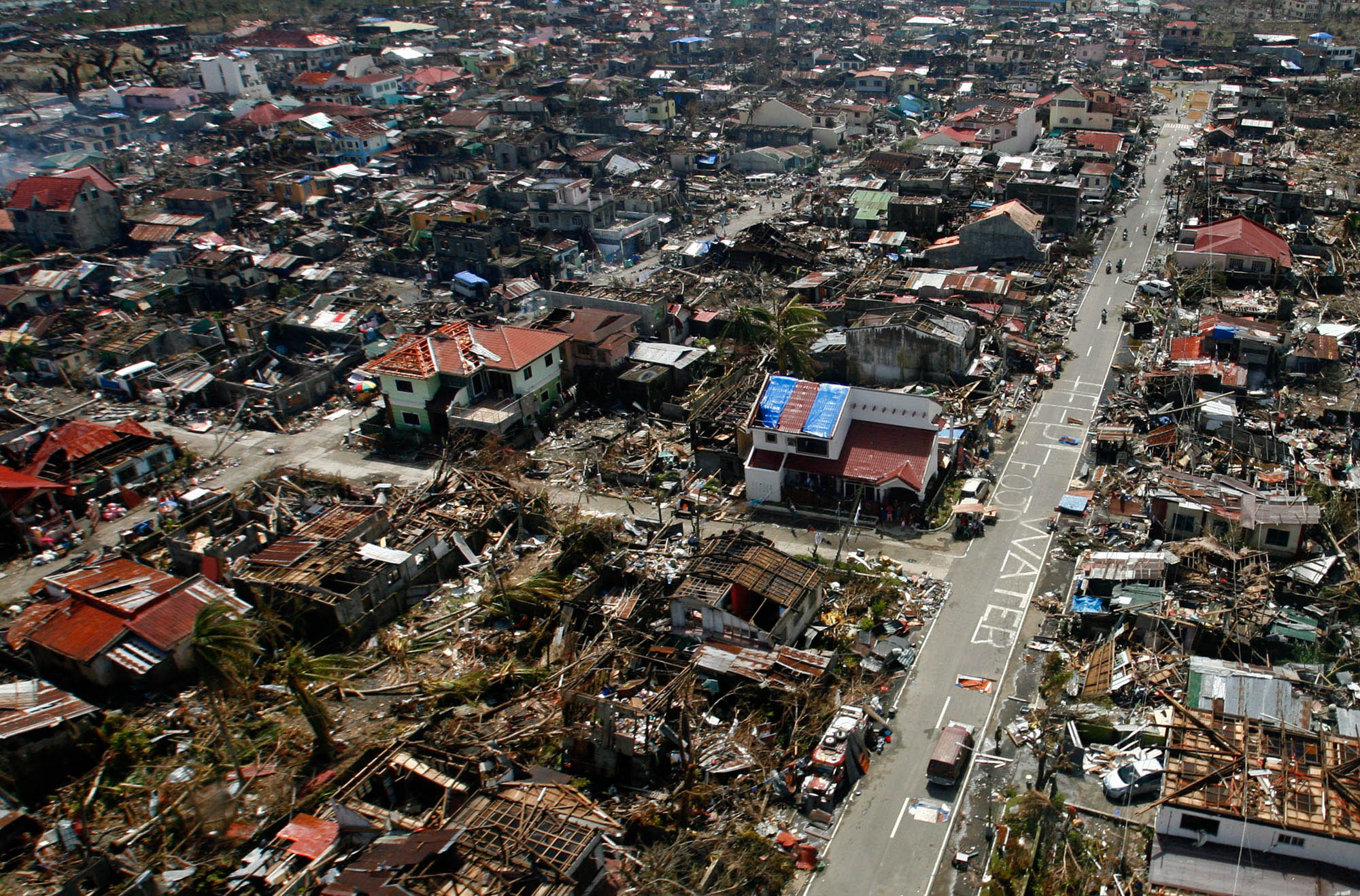
ROOFLESS Supertyphoon “Yolanda” ripped off the roofs of houses in Tanauan town, Leyte province, in this file photo. —INQUIRER FILE PHOTO
The Philippines accounts for 75 percent of all deaths caused by weather, climate and water hazards in the Southwest Pacific region in the past 50 years, according to a new report by the World Meteorological Organization (WMO).
In its “Atlas of Mortality and Economic Losses from Weather, Climate and Water Extremes,” the specialized agency of the United Nations said the majority of the deadliest events in the region from 1970 to 2019 were tropical cyclones that devastated the country, with Supertyphoon “Yolanda” (international name: Haiyan) in 2013 topping the list.
‘Serious disruption’
Globally, the WMO said, there were more than 11,000 disasters attributed to weather, climate and water-related hazards in the 50-year period. These disasters, defined as the “serious disruption” on the function of a community due to hazardous events, have resulted in over 2 million deaths and $3.6 trillion in economic losses.
These translate to a hazard occurring every day on average in the past five decades, taking 115 lives and causing $202 million in losses daily, the WMO said.
While no disaster in the Philippines ranked among the 10 most deadly around the world in the past five decades, it fared highest in the Southwest Pacific region, which included Indonesia, Australia, Papua New Guinea and New Zealand.
$163B in economic losses
The report said that between 1970 and 2019, a total of 1,407 disasters devastated the region, resulting in over 65,000 deaths and $163 billion in economic losses.
Out of the total deaths, 48,950 were recorded in the Philippines, where they were mainly caused by storms.
Owing to its location relative to the Pacific Ocean, the archipelagic nation faces the brunt of extreme weather and climate change. It is lashed by an average of 20 cyclones every year.
The WMO identified Yolanda, the typhoon that battered Eastern Visayas in November 2013, as the deadliest during the five-decade period. It killed more than 7,300 people, based on government figures, but survivors considered it a conservative estimate.
Heavy toll
Also counted among the deadliest disasters in the country were Tropical Storm “Uring” (Thelma), which hit Leyte Island and Negros Occidental in November 1991, killing nearly 6,000 people; Typhoon “Pablo” (Bopha), which left 1,901 people dead in Mindanao in December 2012; and Tropical Depression “Winnie,” whose torrential rains caused flash floods and landslides in Luzon and a death toll of around 1,600.
These disasters also exacted a heavy toll on the economy, with $36.8 billion in cumulative losses. More than half, or some $20 billion, occurred in the past decade, between 2010 and 2019.
Across the world, the number of weather and climate-related disasters have surged fivefold in the past 50 years, the WMO said. “The number of weather, climate and water extremes are increasing and will become more frequent and severe in many parts of the world as a result of climate change,” said WMO secretary general Petteri Taalas in the report.
Increased water vapor in the atmosphere has exacerbated extreme rainfall and flooding, while warming oceans due to climate change have affected the extent and frequency of the most intense tropical storms, he added.
Despite the bleak numbers, the WMO said, improved early warning systems and disaster management have led to a decrease in mortality by almost threefold from 1970 to 2010. In the 2010s, less than 20,000 deaths were recorded, marking a sharp fall from 50,000 in the 1970s.
“Behind the stark statistics lies a message of hope,” said Taalas. “Quite simply, we are better than ever before at saving lives.”
Much remains to be done, however, with only half of the 193 members of the WMO equipped with multihazard early warning systems.
Multihazard forecasting
In 2019, the Philippines secured $10 million from the Green Climate Fund (GCF) to develop its own multihazard forecasting and early warning system for disasters, with target sites in Tuguegarao City in Cagayan province, Legazpi City in Albay province, Palo in Leyte province and New Bataan in Compostela Valley.
It was the first grant that the country received from GCF, the world’s largest climate finance mechanism supporting adaptation and mitigation programs of developing countries.
The project will be led by the Philippine Atmospheric, Geophysical and Astronomical Services Administration.

